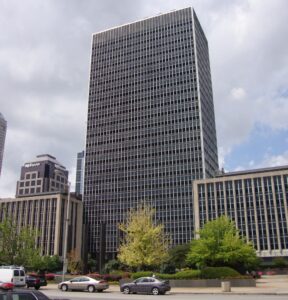Introduction
Indiana, often known as the “Crossroads of America,” boasts a diverse real estate market that reflects its blend of urban vibrancy, suburban tranquility, and rural charm. With affordable housing, a robust job market, and a central location that provides easy access to major cities, Indiana has become an attractive destination for homebuyers and investors alike.
Market Trends
Steady Growth and Affordability
The Indiana real estate market has shown consistent growth over recent years. According to the Indiana Association of Realtors, the state’s housing market has experienced steady increases in home prices and sales volumes, driven by strong demand and limited inventory. In 2023, the median home price in Indiana was approximately $200,000, significantly lower than the national average, making it an appealing option for those seeking affordable housing .
Urban Development in Major Cities
Indiana’s major cities, including Indianapolis, Fort Wayne, and Bloomington, are experiencing significant urban development. Indianapolis, the state capital and largest city, has seen a surge in new residential and commercial projects, particularly in its downtown and surrounding neighborhoods. The revitalization of areas like Mass Ave and Fountain Square has attracted a mix of young professionals and families seeking the convenience of urban living .
Fort Wayne, the second-largest city, has also been a focal point of development, with ongoing efforts to enhance its downtown area through projects like the Riverfront Fort Wayne initiative, which aims to transform the city’s riverfront into a vibrant community space with parks, trails, and mixed-use developments .
Bloomington, home to Indiana University, has seen growth in student housing and mixed-use developments, catering to both the academic community and the city’s growing population .
Suburban Appeal
Suburban areas in Indiana have become increasingly popular, offering a balance between affordability, space, and proximity to urban centers. Cities like Carmel, Fishers, and Zionsville, located in the Indianapolis metropolitan area, are known for their excellent schools, family-friendly environments, and high quality of life .
These suburbs have seen significant new construction, with developers focusing on building single-family homes and townhouses to accommodate the influx of new residents. The demand for suburban living has been partly driven by the increasing prevalence of remote work, allowing more people to live further from their workplaces .
Rural and Small-Town Charm
Beyond the bustling urban centers and expanding suburbs, Indiana’s rural areas and small towns offer a different kind of appeal. These regions provide a slower pace of life, scenic landscapes, and a strong sense of community. Towns like Madison and Nashville are known for their historic architecture, arts scenes, and outdoor recreational opportunities .
Rural properties, including farmland and large estates, are particularly attractive to those looking for space and tranquility. The agricultural sector remains a vital part of Indiana’s economy, with farmland being a significant component of the state’s real estate market. Investors and homeowners alike are drawn to the opportunities that rural Indiana offers, whether for farming, recreation, or simply escaping the hustle and bustle of city life .
Investment Opportunities
Indiana’s real estate market offers a range of investment opportunities. The state’s relatively low property taxes, business-friendly environment, and affordable real estate make it an attractive destination for both local and out-of-state investors. Rental properties, particularly in college towns and major cities, have proven to be lucrative due to consistent demand from students and professionals .
Additionally, the growing interest in sustainable and energy-efficient homes presents new opportunities for developers and investors. There is an increasing demand for properties with green features such as solar panels, energy-efficient appliances, and sustainable building materials, reflecting a broader trend towards environmentally conscious living .
Conclusion
Indiana’s real estate market is characterized by its affordability, steady growth, and diverse range of options, from urban developments and suburban communities to rural retreats. Whether you’re a homebuyer looking for a family-friendly suburb, an investor seeking profitable opportunities, or someone in search of rural charm, Indiana’s real estate landscape has something to offer. As the state continues to grow and evolve, its real estate market is likely to remain a vibrant and dynamic component of its economy.



